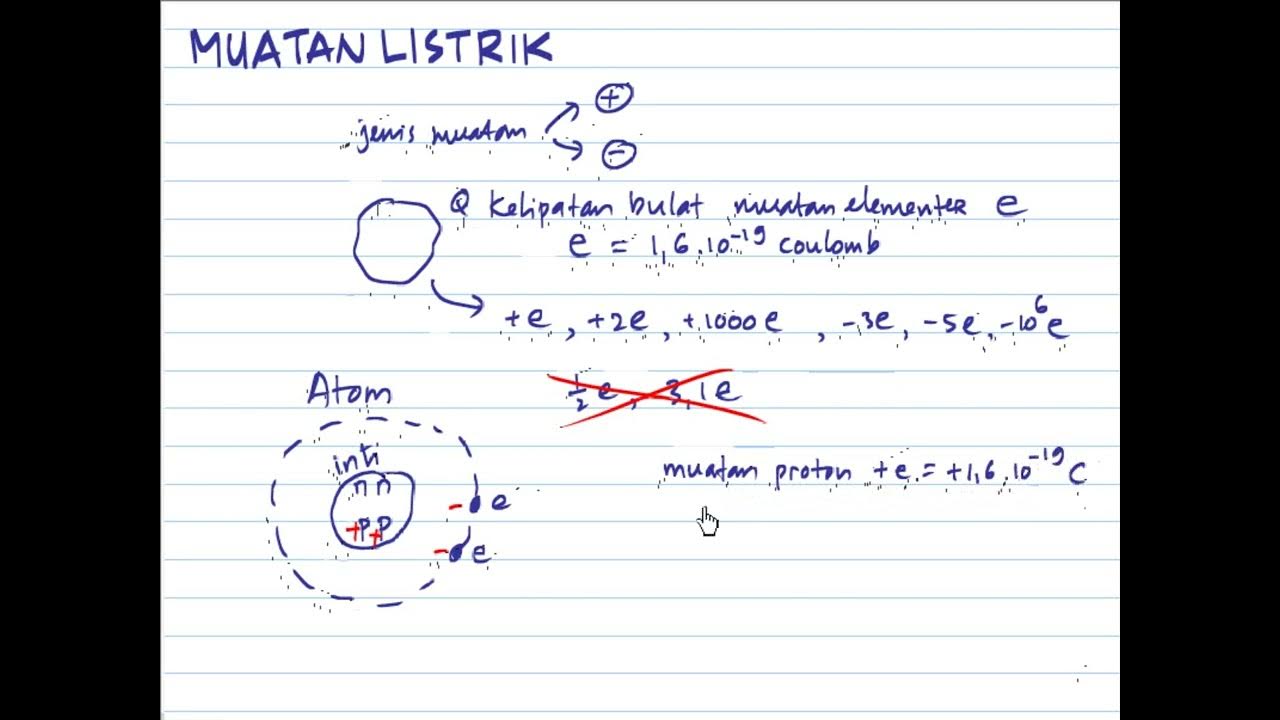Physics - E&M: Ch 35.1 Coulumb's Law Explained (26 of 28) Charges Suspended on a String: Ex. 1
Summary
TLDRIn this video, the speaker explains how to determine the charge on two objects suspended by strings. The objects are repelling each other due to their charge, causing the strings to form an angle. The explanation covers the forces at play, including Coulomb's force and gravity, and how they balance in static equilibrium. Through a detailed step-by-step process involving trigonometry and Coulomb's law, the speaker derives a formula to calculate the charge in terms of the mass, string length, and angle. This formula allows for the determination of the charge when these variables are known.
Please replace the link and try again.
Q & A
What happens to the two objects when there is no charge on them?
-When there is no charge on the two objects, they will sit side by side, with no force acting between them.
Why do the two objects push apart when they have charge?
-The objects push apart because they have like charges, which cause a repulsive force between them due to Coulomb's law.
What is the role of the angle (θ) in this system?
-The angle (θ) represents how much the strings are displaced from the vertical due to the repulsive force between the charges. It is related to the forces acting on the objects.
How does the Coulomb force affect the charges?
-The Coulomb force causes the charges to repel each other, which pushes the objects apart and causes them to form an angle with the vertical.
What forces act on the objects in the system?
-The forces acting on the objects include the Coulomb repulsive force, the gravitational force pulling the objects downward (mg), and the tension in the strings.
What is the significance of static equilibrium in this scenario?
-Static equilibrium means that the system is not moving, so the sum of all forces acting on the objects must equal zero. This condition allows us to relate the forces and solve for the unknowns.
How is the Coulomb force (F_c) related to the gravitational force (mg)?
-The Coulomb force (F_c) is related to the gravitational force (mg) through the tangent of the angle θ. Specifically, the tangent of θ equals the Coulomb force divided by the gravitational force.
How do you find the distance (D) between the two charges?
-The distance (D) between the charges can be derived from the geometry of the system. It is equal to 2L * sin(θ), where L is the length of the string and θ is the angle of displacement.
What is the final equation for the charge (Q) on each object?
-The charge (Q) on each object is given by the equation: Q = 2L * sin(θ) * sqrt(Mg * tan(θ) / K), where L is the string length, θ is the angle, M is the mass, g is gravity, and K is Coulomb's constant.
What information is needed to calculate the charge (Q) on the objects?
-To calculate the charge (Q), you need the values of the string length (L), the angle (θ), the mass of the objects (M), the acceleration due to gravity (g), and Coulomb's constant (K).
Outlines

This section is available to paid users only. Please upgrade to access this part.
Upgrade NowMindmap

This section is available to paid users only. Please upgrade to access this part.
Upgrade NowKeywords

This section is available to paid users only. Please upgrade to access this part.
Upgrade NowHighlights

This section is available to paid users only. Please upgrade to access this part.
Upgrade NowTranscripts

This section is available to paid users only. Please upgrade to access this part.
Upgrade NowBrowse More Related Video
5.0 / 5 (0 votes)





